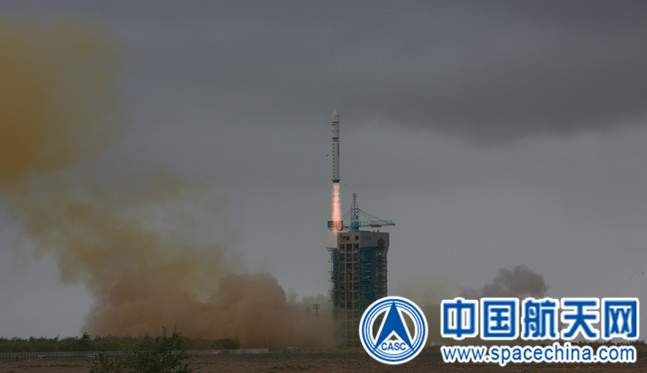Triple Play! 3 Rocket Launches Mark Busy Monday in Spaceflight (Videos)

Monday (Oct. 9) was a very busy day in spaceflight, with three different rockets launching around the world.
China's Long March 2D booster got things going with a liftoff from Jiuquan, a facility in the Gobi Desert, at 12:13 a.m. EDT (0413 GMT; 12:13 p.m. local China time). The rocket successfully lofted the VRSS-2 remote-sensing satellite for Venezuela, according to Chinese media reports.

The action then shifted to California's Vandenberg Air Force Base, where a SpaceX Falcon 9 rocket launched at 8:37 a.m. EDT (1237 GMT; 5:37 a.m. local California time). The two-stage booster delivered 10 satellites to orbit for the communications company Iridium, and the Falcon 9's first stage pulled off a pinpoint landing on a SpaceX "drone ship" stationed in the Pacific Ocean.
These touchdowns are part of SpaceX's effort to develop fully reusable rockets and spacecraft, which company founder and CEO Elon Musk has said will slash the cost of space exploration. SpaceX now has 17 successful Falcon 9 first-stage landings under its belt, and the company has re-flown two used boosters to date.
The spaceflight triple was capped by a Japanese H-2A rocket, which lifted off from Tanegashima Space Center in southwestern Japan at 6:01 p.m. EDT (2201 GMT) Monday. The booster successfully orbited Michibiki 4, the fourth satellite in Japan's homegrown navigation constellation, which is called the Quasi-Zenith Satellite System. (It was 7:01 a.m. on Tuesday, Oct. 10, local Japan time when the H-2A launched, so the trifecta we're talking about doesn't apply across all time zones.)
More spaceflight action is on tap for the week as well. SpaceX plans to launch the SES-11/EchoStar 105 communications satellite on Wednesday (Oct. 11), using a previously flown Falcon 9 first stage. And two Russian rockets are scheduled to lift off from Baikonur Cosmodrome in Kazakhstan shortly thereafter: A Soyuz will send the uncrewed Progress cargo craft toward the International Space Station on Thursday (Oct. 12), and a Rockot booster will loft Europe's Sentinel 5 Precursor Earth-observation satellite on Friday (Oct. 13).
Follow Mike Wall on Twitter @michaeldwall and Google+. Follow us @Spacedotcom, Facebook or Google+. Originally published on Space.com.
Get the Space.com Newsletter
Breaking space news, the latest updates on rocket launches, skywatching events and more!
Join our Space Forums to keep talking space on the latest missions, night sky and more! And if you have a news tip, correction or comment, let us know at: community@space.com.

Michael Wall is a Senior Space Writer with Space.com and joined the team in 2010. He primarily covers exoplanets, spaceflight and military space, but has been known to dabble in the space art beat. His book about the search for alien life, "Out There," was published on Nov. 13, 2018. Before becoming a science writer, Michael worked as a herpetologist and wildlife biologist. He has a Ph.D. in evolutionary biology from the University of Sydney, Australia, a bachelor's degree from the University of Arizona, and a graduate certificate in science writing from the University of California, Santa Cruz. To find out what his latest project is, you can follow Michael on Twitter.









